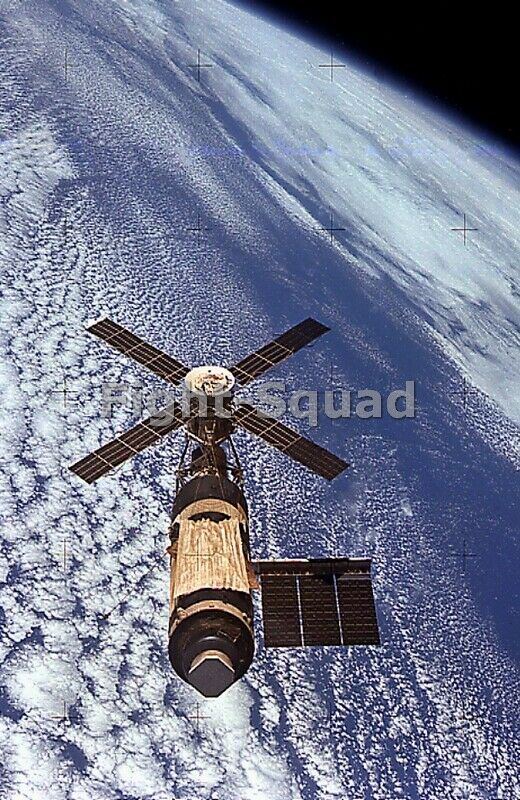The idea that ultimately became Skylab first surfaced in 1962 as a proposal to convert a spent Saturn upper stage (Saturn V S-II stage) into an orbital workshop. In 1968, the Marshall Space Flight Center proposed an alternative to the wet workshop concept of refurbishing a space station in orbit. Instead, a fully equipped dry workshop could be launched as a complete unit ready for occupancy. Skylab became the free world's first space station. Launched in May 1973, the Skylab space station was occupied in succession by three teams of three crewmembers. These crews spent 28, 59, and 84 days respectively, orbiting the Earth and performing nearly 300 experiments. This view of Skylab in orbit was taken by the Skylab 4 (the last Skylab mission) crew.
This is a nice reproduction of an photograph
Size is about 4" x 6" (10x15cm)
WATERMARKS WILL NOT BE ON YOUR PHOTO
FREE SHIPPING WORLDWIDE
SP
ECIAL OFFERS
BUY 3 PHOTOS AT ONCE AND GET 1 FREE (add 4 to cart)
BUY 10 PHOTOS AT ONCE FOR $29.5 ONLY $ 2.95 EACH PHOTO (add 10 to cart)
CLICK HERE TO ACCESS THE OFFERS
Click here to visit my eBay Store: EliteSquad
Details
Type:
New
Print on high quality Photo Paper
Quality:
This is NOT an inkjet or Laserjet print but one produced in a professional photographic lab
Format Size: About 4
" X 6" (10 x 15 cm)
WATERMARK "FIGHT-SQUAD" WILL NOT BE ON YOUR PHOTO
Due the the aspect ratio of some images there may be very thin white borders
View more great items
T
his brand new 4" patch is made off 100% embroidery and features a plastic backing and has the slogan Red Planet Gladiators.
NASA's twin robot geologists, the Mars Exploration Rovers, launched toward Mars on June 10 and July 7, 2003, in search of answers about the history of water on Mars. They landed on Mars January 3 and January 24 PST, 2004 (January 4 and January 25 UTC, 2004).The Mars Exploration Rover mission is part of NASA's Mars Exploration Program, a long-term effort of robotic exploration of the red planet.Primary among the mission's scientific goals is to search for and characterize a wide range of rocks and soils that hold clues to past water activity on Mars. The spacecraft are targeted to sites on opposite sides of Mars that appear to have been affected by liquid water in the past. The landing sites are at Gusev Crater, a possible former lake in a giant impact crater, and Meridiani Planum, where mineral deposits (hematite) suggest Mars had a wet past.
Specifics
- Condition: New
- Item must be returned within: 30 Days
- Refund will be given as: Money Back
- All returns accepted: Returns Accepted
- Return shipping will be paid by: Buyer


